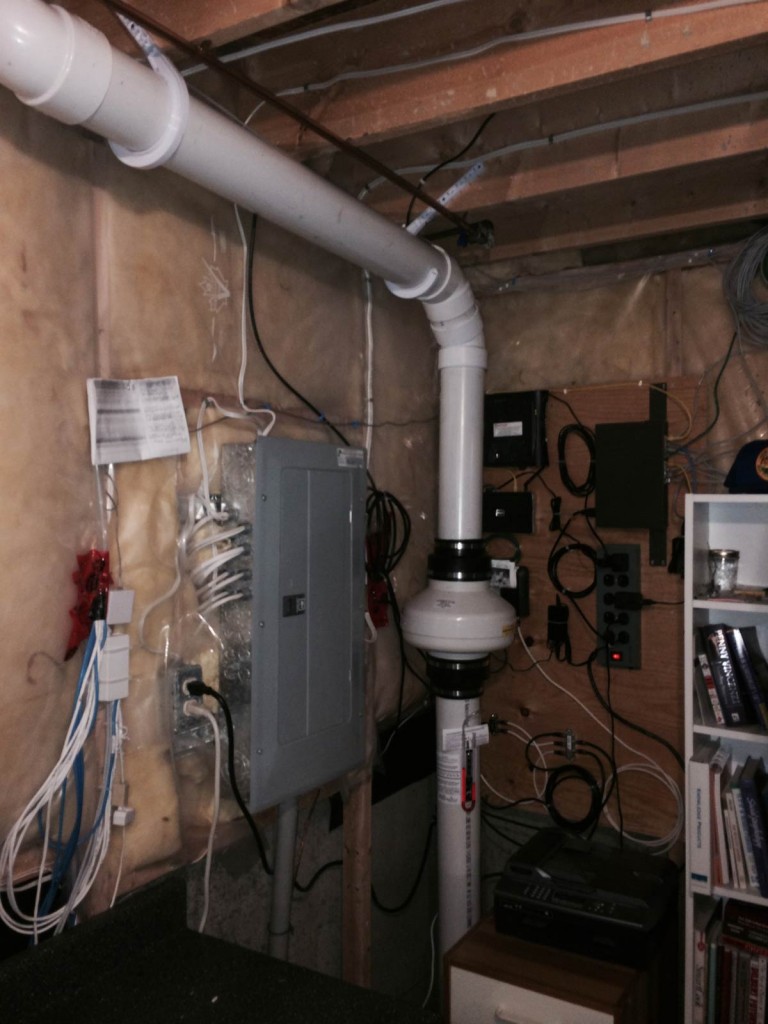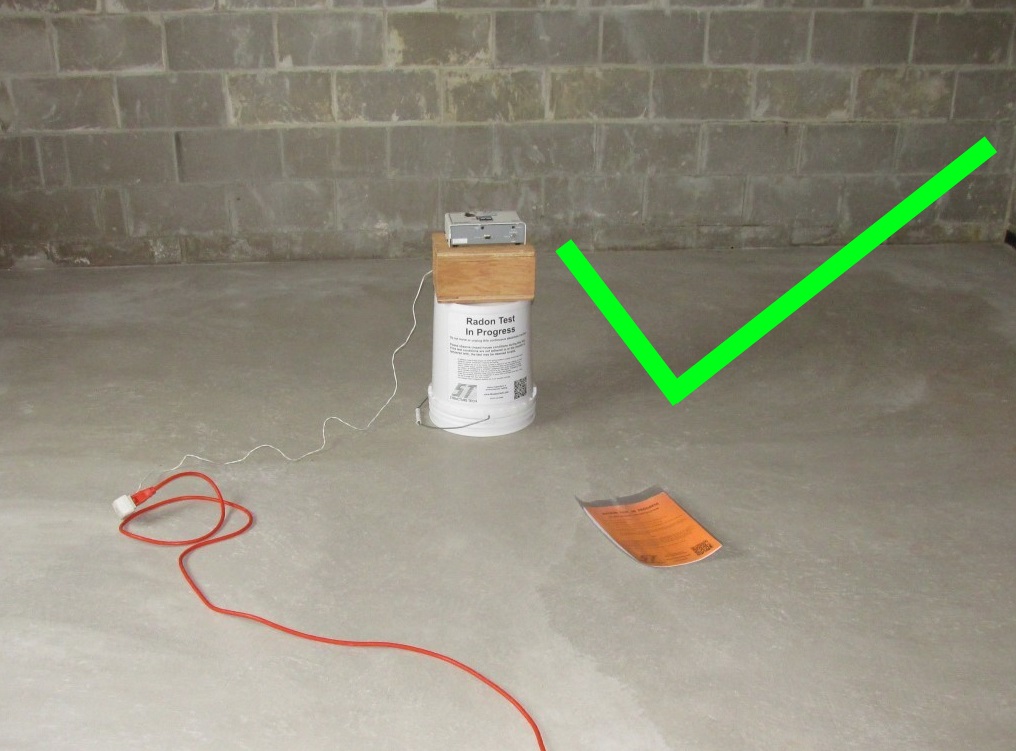Miners who had actually inhaled radon revealed a high occurrence of lung cancer, so it was inferred that radon in the residence presented a similar risk, in spite of much lower concentrations and quite different problems. Iowa has the highest portion of residences racking up above a risk-free radon degree, with 71.6 percent of houses potentially at risk. The high degrees of radon in Iowa are the outcome of old glaciers that ground down granite rocks in time and deposited them in the kind of dirt. Health care specialists now recognize that inhaling huge quantities of radon causes lung cancer.
The dangers of radon
How long does radon stay in the air?

It can be found in all 50 states. Once produced, radon moves through the ground to the air above. Some remains below the surface and dissolves in water that collects and flows under the ground's surface. Radon has a half-life of about four days - half of a given quantity of it breaks down every four days.
The quantity of radon from groundwater is usually little compared for radon that originates from the dirt. Because the highest possible typical radon focus are found in Iowa, Iowans go to also better threat of radon-induced lung cancer compared to most Americans.
Is a radon level of 3 safe?

No, not at all. But a claim that a company can completely eliminate radon from your home should be very closely scrutinized. By definition, Radon Mitigation is any process used to reduce radon gas concentrations in the breathing zones of occupied buildings.
As a matter of fact, you're probably inhaling little traces of it today. But when it's entraped inside a home as well as reaches high degrees, radon can create lung cancer cells.
Why is radon bad for you?
Radon produces a radioactive dust in the air we breathe. The dust is trapped in our airways and emits radiation that damages the inside of our lungs. This damage, like the damage caused by smoking, increases our risk of lung cancer.
These access points include fractures in the concrete slab, un-trapped flooring drains, sump pits, pipes penetrations, exposed dirt/gravel crawlspaces or even the pores of the concrete. Radon gas is the 2nd leading cause for lung cancer cells according to the US EPA and also eliminates greater than 20,000 Americans per year. Recognizing the threat aspects for lung cancer is crucial to taking actions to aid prevent the illness. Not cigarette smoking, avoiding used smoke, preventing HIV infection, and understanding and avoiding exposure to environmental factors such as radon might aid to minimize your danger. According to the National Cancer Institute, studies have shown that cigarette smoking that are reduced in tar or pure nicotine does not lower the risk.
Can radon cause headaches?
Radon gas is odorless, colorless, tasteless and radioactive. Radon gas seeps into the home through radon entry points in the foundation. Because you can't smell radon gas, the only way to know if you have it in your home, office or school is to test for it.
Radon levels: What do they suggest?
Despite a mitigation system, the only way to know your radon degrees are in a safe variety is to continually evaluate. Despite that admission, the EPA went on with the straight no-threshold version for radon out of a wealth of caution. A Globe Health and wellness Organization meta-analysis of 3 big, previous epidemiological radon risk researches recommended lung cancer cells situations at 5.4 picocuries per liter. The EPA keeps in mind that these threat forecasts do not call for projection from high dosage prices to low1.
Concerning 2,900 of these fatalities occur among individuals that have actually never ever smoked. Comparable to a heating system or smokeshaft, radon reduction systems require some occasional maintenance.
- Pennsylvania trainees ages 9-14 years of ages were motivated to develop an educational poster that reveals the physical aspects of radon, the damaging results of interior radon gas, or the importance of testing for radon in the residence.
- DEP submitted Pennsylvania's first-place poster to the Conference of Radiation Control Program Supervisors 2020 National Radon Poster Contest, and also a nationwide winner will be announced in January of 2020.
- Despite the eventual awareness of the dangers, radon-induced lung cancer in miners stayed a considerable hazard until the 1970s.
- One of the most generally made use of device for making short-term radon measurements in homes is the charcoal cylinder.
- If screening was concentrated in high-risk groups such as heavy smokers, the approximated cost of reduction after a single radon test was minimized to $ per life radon mitigation knoxville tn year saved, a number considered to be cost-effective.
How bad is a radon level of 8?
The EPA strongly recommends radon mitigation if your radon levels are above 4 pCi/L. While radon levels below 4 still pose a health risk. They recommend you consider mitigation if your radon levels are between 2 and 4 pCi/L. They are quick to point out that there is no known safe level of edwards point chattanooga radon.
Who pays for radon mitigation buyer or seller?
There's no single method that fits all radon removal system needs. Common techniques include: Sub-slab depressurization, where suction pipes are inserted through the floor or concrete slab into the concrete slab below the home. A radon vent fan then draws out the radon gas and releases it into the air outside.
Is radon only in the basement?
Radon is completely odorless as well as being invisible. Because it is often found unexpectedly in basements, some people mistakenly believe that it only occurs in basements. Most commonly homes with basements are suspect for having higher radon levels.
Does home insurance cover radon mitigation?
homeowners insurance and radon remediation While home insurance is designed to financially protect you from sudden and unexpected perils such as fire or theft, it typically won't cover things that can be considered related to home maintenance like radon testing and mitigation.
Is a radon level of 2 safe?
Radon levels are measured in picocuries per liter, or pCi/L. Levels of 4 pCi/L radon poisoning signs or higher are considered hazardous. Radon levels less than 4 pCi/L still pose a risk and in many cases can be reduced, although it is difficult to reduce levels below 2 pCi/L. Once installed, a follow-up radon test is done.
How much does it cost to run a radon fan?
Known risk factors for lung cancer include: Risk by age: About two out of three lung cancers are diagnosed in people over age 65, and most people are older than 45. The average age at diagnosis is 71. Family history: Genetics may predispose certain people to lung cancer.
Is radon something to worry about?
The average home has about 1.3 pCi/L of radon. Such levels aren't enough to worry about, but under the right conditions, they could make you sick. According to the EPA, a nonsmoker who was exposed to average levels of radon for a lifetime would have a 1 in 500 risk of developing lung cancer.
Is it hard to sell a house with radon?
Fortunately, it's not hard to sell a house with radon, provided that you alert potential buyers and mitigate the problem, say Brian Thomas, a top real estate agent in the Denver, Colorado area, with 16 years of experience. “For as much fear and uncertainty as radon causes, there's an easy fix.”
How common is radon in a home?
It's common: About 1 in every 15 homes has what's considered an elevated radon level. The gas is odorless and invisible, says the EPA, and it causes no immediate symptoms, so the only way to know if your home is affected is by testing your individual residence.
Will opening windows reduce radon?
Opening windows improves air circulation and ventilation, helping move radon out of the house and mixing radon-free outside air with indoor air. Opening basement windows helps reduce negative air pressure, diluting radon with clean outdoor air.
What kind of cancer is caused by radon?
Radon decays quickly, giving off tiny radioactive particles. When inhaled, these radioactive particles can damage the cells that line the lung. Long-term exposure to radon can lead to lung cancer, the only cancer proven to be associated with inhaling radon.